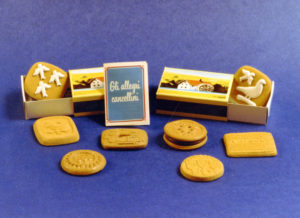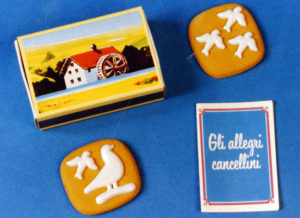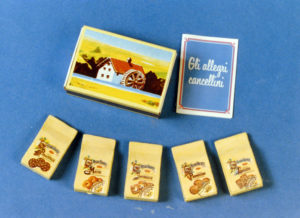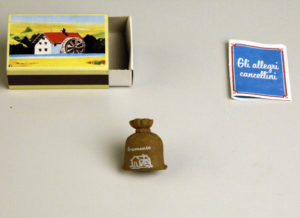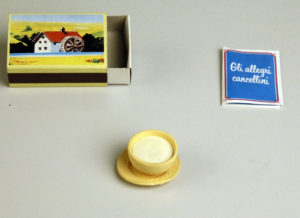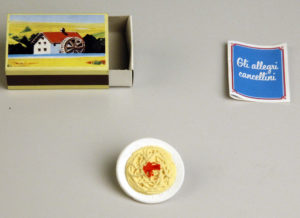316 million… little erasers
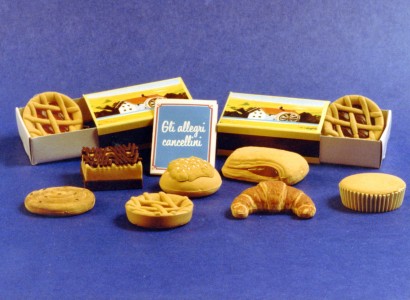
by Graziella Carbone
1983 – The Era of Happy Erasers Begins
The reconstruction work of the history of our Little Surprises brought me to Lonate Pozzolo, in the province of Varese, to meet a longtime friend: Antonio Locati.
All of the little erasers (named The Happy Little Erasers) of Mulino Bianco were made in his factory (Locati Trading S.p.A.), a total of three hundred sixteen million (you read it correctly, 316 million!) pieces. In these thirty years, we have kept in contact often, and we worked on many projects together. Antonio begins to narrate: «I began to work in the family company when I was 14, in the mechanical shop on plastic injection molding machines. I took care of designing, developing and building molds (this experience allowed him to find immediate solutions to the various problems directly in front of his clients).
At 22, I was the head of our company, and I developed and kept contacts with our most important clients, among which was Barilla. My philosophy (an innovating one for those times for a company that printed plastic materials) was to offer the clients the highest possible level of support and collaboration in the development of any operation».
At the same time, Antonio travelled around the world in search of new ideas and was able to apply the most advanced technologies both to industrial production and to gadget production, including the phase of assembling the objects and that of their packaging. He also collaborated with Berto Zarattini often. A successful entrepreneur, Antonio continued to develop his line of work with passion and tenacity until his retirement.
But let’s return to our Little Erasers. The year was 1983 and Antonio was able to make the first thermoplastic rubbers in his factory in Italy using a totally innovative technique. Artificial materials with macromolecular structure that in specific conditions of temperature and pressure undergo permanent variations in shape are called plastics. Thermoplastic is a material that becomes malleable, that is, it becomes soft under the action of heat. In this phase, it can be molded or shaped. When it cools, it stiffens again.
Of course, the first Little Erasers were miniature replicas (obviously, seeing the small dimensions of our boxes) of the Crostatina (little pie) with strawberry, apricot and chocolate fillings. They were packaged with their own accompanying leaflet in the original version of the Vallata (valley) box.
Thus, Little Erasers shaped like Biscotti, Tegolino (to me, it was unsurpassable together with Crostatine for their making, the chocolate pouring was technically amazing), Tortina Campagnola and Baiocco (all historical products by Mulino Bianco), came one after the other.
In 1983, Little Erasers that reproduced cookies and snacks by Mulino Bianco in scale were made mostly. In 1984, the era of pad printed Little Erasers began, that is, bearing a color print of details.
Locati recounts: « At my company, I installed a specifically designed machine, a truly avant-garde machine…it printed in four-color process on plastic, one color at a time. A real challenge back then! ». Pad printing is a specific technique that makes it possible to print an image (drawings and lettering) engraved on a stainless steel plate onto a support, based on transferring ink through silicon swabs. Pad printing can be made on any surface, either linear or curved, and on any material, like plastic, glass, metal and ceramics.
The first Little Surprise printed this way was the Wheat Sac of 1984. The second one, produced at the same time, was the eraser shaped like the Coccio bowl, the first extraordinary and unsurpassed Mulino Bianco promotion.
Later on, Antonio Locati began to produce Little Erasers with multicolored images like the Zainetto (1985) eraser, a replica of a backpack of one of the first prize collections dedicated to children, and the Calcolatrice (calculator) eraser.
